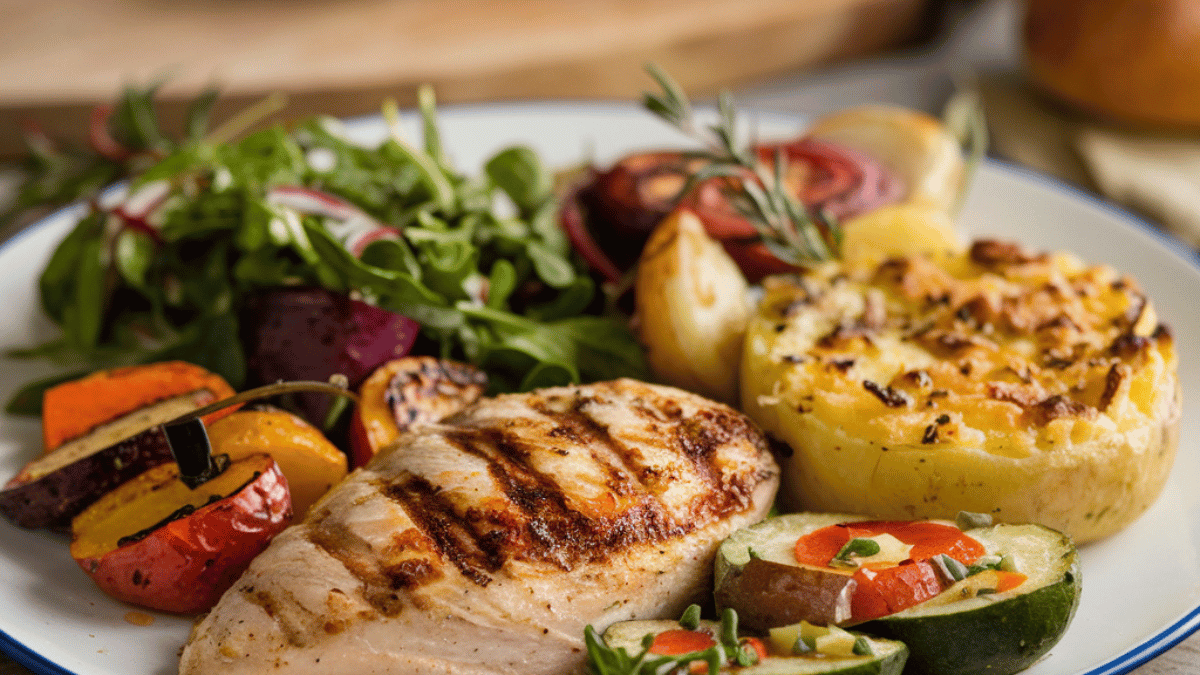How to Create Engaging Food Content

Creating engaging food content is an art that combines creativity, storytelling, and a dash of marketing savvy.
Whether you’re a seasoned food blogger or just starting, knowing how to captivate your audience is crucial.
This article will explore strategies and tips for creating food content that delights and engages your readers.
Understanding Your Audience
Before creating food content, you must understand who you’re writing for. Are they food enthusiasts, home cooks, or aspiring chefs?
Knowing your audience will help you tailor your content to their interests and needs.
Identify Their Preferences
Take time to research your audience’s preferences. What type of food do they like? Do they prefer quick recipes or gourmet dishes?

Pexels/Nadin Sh
Use surveys, polls, or social media interactions to gather insights.
Analyse Your Competitors
Look at what other food bloggers are doing. Analyze their content, see what’s working for them, and identify gaps you can fill. This doesn’t mean copying their style but understanding what resonates with the audience.
Crafting Compelling Stories
Every dish has a story; sharing these stories can make your content more relatable and engaging.
Use Personal Experiences
Personal experiences add authenticity to your content.
Share anecdotes about your cooking journey, the inspiration behind a recipe, or a memorable meal.
This personal touch can create a connection with your readers.
Highlight Cultural Significance
Food often carries cultural significance. Sharing a dish’s history or cultural background can intrigue your audience and provide a richer understanding of the food.
Visual Appeal: The Power of Images
In the world of food blogging, a picture truly is worth a thousand words. High-quality images can make your content more attractive and engaging.

Invest in Good Photography
Good food photography doesn’t necessarily require an expensive camera. Even a smartphone can produce stunning photos with some basic knowledge and practice. Focus on natural lighting and composition to highlight the food’s best features.

Pexels/Lisa Stroud
Use Props and Backgrounds
Props and backgrounds can enhance the visual appeal of your food photography.
Use complementary colours and textures to make your dishes stand out. Remember, simplicity is often vital—don’t let props overshadow the food.
Writing Engaging Content
Your writing style significantly influences how your audience perceives your content.
Be Descriptive
Use descriptive language to bring your food to life. Describe the textures, flavours, and aromas to create a sensory experience for your readers. This can make your content more vivid and engaging.
Keep it Simple
While descriptive language is essential, clarity should never be sacrificed. Keep your language simple and direct, ensuring readers can easily follow your recipes or stories.
Using Social Media to Enhance Engagement
Social media platforms are powerful tools for engaging with your audience and promoting your food content.
Choose the Right Platforms
Identify where your audience spends most of their time. Instagram and Pinterest are excellent for visually-driven content, while Facebook and Twitter can be great for sharing articles and engaging in conversations.
Engage with Your Audience
Respond to comments, ask questions, and encourage your audience to share their experiences. Engagement is a two-way street; showing that you value your readers’ input can strengthen your community.
Collaborating with Other Bloggers
Collaboration can expand your reach and introduce your content to new audiences.
Guest Blogging
Offer to write guest posts for other food bloggers or invite them to contribute to your blog. This can provide fresh perspectives and attract their audience to your content.
Joint Projects
Consider working on joint projects, such as a themed recipe series or a cooking challenge. Collaborations can be fun and provide value to both your and your partner’s audiences.
Keeping Content Fresh and Relevant
Updating with food trends and seasonal ingredients can keep your content fresh and relevant.
Follow Food Trends
Follow industry news, attend food events, and engage with other food bloggers to stay informed about the latest food trends. Incorporate these trends into your content to keep it current and exciting.
Use Seasonal Ingredients
Using seasonal ingredients can make your recipes more appealing and emphasize sustainability. Highlighting what’s in season can inspire your audience and encourage them to try new things.
Gifts for Food Bloggers
As a food blogger, you might also be interested in gifts enhancing your craft.
Photography Equipment
Good photography equipment can significantly improve the quality of your content. Consider items like a tripod, lighting kit, or new lens.
Unique Kitchen Gadgets
Innovative kitchen gadgets can make cooking more fun and efficient. Look for unique tools that align with your cooking style.
Subscription Boxes
Food subscription boxes can be a great way to discover new ingredients and cuisines. They offer a monthly surprise that can inspire new content ideas.
Conclusion
Creating engaging food content requires a blend of creativity, storytelling, and visual appeal.
By understanding your audience, crafting compelling stories, and utilizing social media, you can create content that resonates and keeps readers coming back for more.
Whether sharing personal experiences or collaborating with other bloggers, the key is to remain authentic and passionate about your craft.
With these strategies, your food blog can become a cherished destination for food lovers everywhere.
